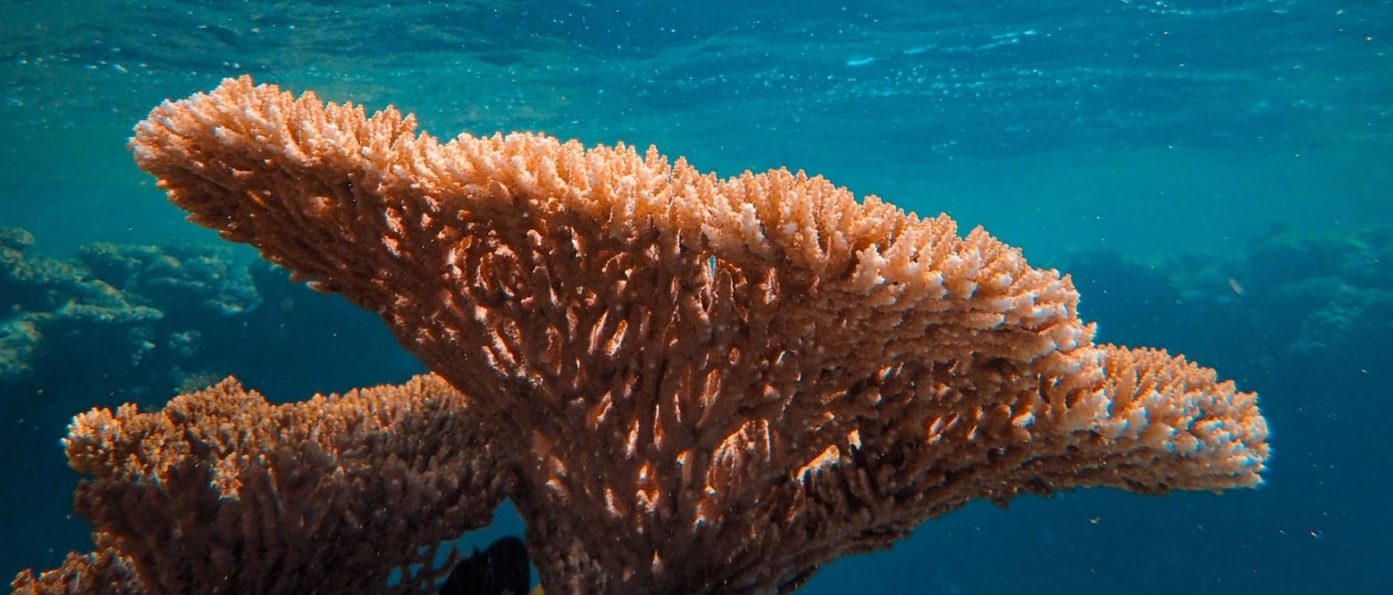A new wave of consequences for coral bleaching
Coral bleaching occurs when conditions such as temperature, light, or nutrients affect the symbiotic algae living in its tissues, causing them to turn completely white. However, greater than all natural causes are the effects of human activity. We’ve all seen pictures of colourful coral reefs from around the world, with the Great Barrier Reef being the largest of its kind. But these pretty pictures will soon be a memory if pollution continues at its current rate.
What are corals?
Corals are marine invertebrates, related to jellyfish and most species of it live in large colonies. Often confused with plants, these sessile animals live in one place and do not move throughout their lifetime. Corals have an ancient relationship between them and an algae called zooxanthellae which lives inside them. This relationship is called symbiosis which means that it benefits both parties. The algae uses the coral’s waste for photosynthesis and the coral benefits by getting oxygen and nutrients from the algae, which it needs to live.
Greater than all natural causes are the effects of human activity
Why are corals important?
Although they may seem like they don’t do much, corals have a number of vital functions. Firstly, coral reefs are thought to be the most diverse ecosystems on the planet. This gives animals a habitat to live in and also ensures that if there was a major catastrophic event, not all the species would be wiped out. Because fish can live and eat in the habitat that coral reefs provide, it is estimated that over 1 billion people depend on fish from the coral reefs as a food source. Also, corals play a key role in helping to control shores close to where they live. This is because they can dissipate wave energy from storms and tsunamis which helps to greatly reduce the damage that is caused by these events on the nearby land.
It is estimated that over 1 billion people depend on fish from the coral reefs as a food source
What is coral bleaching?
When environmental conditions such as temperature, light or nutrient availability change, corals get “stressed” because they cannot tolerate the new conditions. This causes them to expel the algae living inside them and the corals become completely white, or in other words, bleached. Although this doesn’t kill the coral, it makes it a lot harder for it to survive. These days, most bleaching events are a result of rising sea temperatures, which can be directly linked to climate change. This results in whole colonies of corals dying which is detrimental to the ecosystems but also humans.
A recent study has confirmed that the Great Barrier Reef has suffered a third mass coral bleaching event in the last 5 years. The damage was studied both in-water and aerially and has been described as “widespread”. The full extent of the damage will be compared to the previous bleaching event once aerial surveys are completed. The Earth has already warmed by 1 degree since the industrial revolution and it is estimated that if this increases to 1.5, most of the corals in our oceans will be dead.
The only way we can slow down the effects of coral bleaching is if we make changes to stop the sea temperatures from rising even further
What is being done about it?
With half of the Great Barrier Reef’s shallow-water corals being bleached and killed between 2016 and 2017, it is an urgent matter to save them before there is nothing left to save. Whilst it is expected that many more measures will be taken to protect corals after the study is completed and the restrictions of the pandemic are over, there are already many programmes in place. Scientists and organisations around the world are raising awareness about the importance of corals and putting schemes in place to try to preserve them for as long as possible. Many areas which house corals are now being listed as Marine Protected areas which aim to limit the number of threats that they receive, such as pollution and local fishing. Whilst this is great, it does not erase the problem of rising global temperatures. Therefore, the only way we can slow down the effects of coral bleaching is if we make changes to stop the sea temperatures from rising even further.

Comments